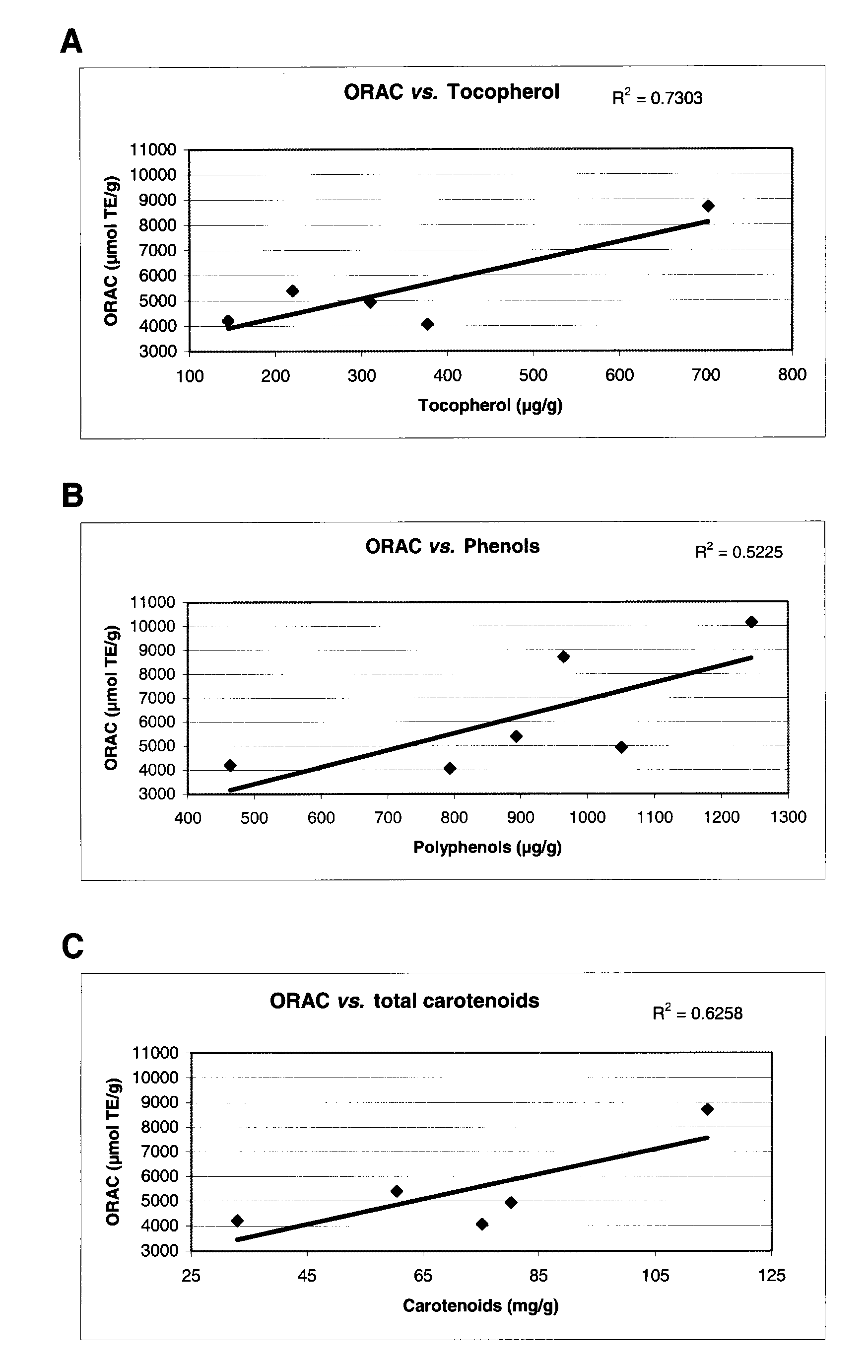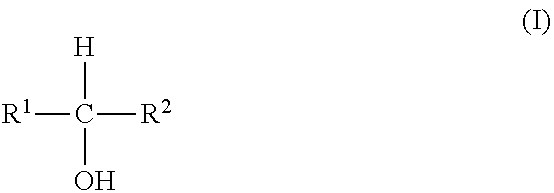Echinoderm-derived extracts, methods of preparation and uses thereof
a technology of echinoderm and extract, which is applied in the field of extracts obtained from marine invertebrates, can solve problems such as direct tissue damage, and achieve the effect of decreasing or inhibiting oxidative stress
- Summary
- Abstract
- Description
- Claims
- Application Information
AI Technical Summary
Benefits of technology
Problems solved by technology
Method used
Image
Examples
example 1
Method of Extraction
[0144]Green sea urchin (Strongylocentrotus droebachiensis) tissues (gonads and digestive system) and sea cucumber (Cucumaria frondosa) viscera were freeze-dried for 96 h, finely ground with a commercial grinder (Fitzmill™ D6) to >250 μm size and kept frozen (−20° C.) in the dark for about one week. Dry and ground samples were used for high-pressure liquid-solid extraction (HPLE) based on the method of Richter et al. (U.S. Pat. No. 5,843,311). The extraction process was carried out using a Dionex™ ASE-200 extractor (Dionex Corporation, Sunnyvale, Calif., USA). For each extraction, about 200 mg of ground sample was mixed with a dispersing agent (diatomaceous earth) to facilitate the distribution of the biological material along each extraction cell, and increasing the contact surface with the solvent. For 200 mg of dry sample, 4400 mg of dispersing agent was used (sample / dispersing agent ratio of about 1 / 22). The dispersing agent and sample mix was introduced in a ...
example 2
Evaluation of the Antioxidant Properties of the Extracts
[0148]Antioxidant properties of extracts were estimated using the Oxygen Radical Absorption Capacity (ORAC) method. The analytical procedure has been adapted from a published method (Ou et al., 2001. J. Agric. Food Chem. 49: 4619-4626), using 96-well microplates and a SpectraMaxGemini™ spectrofluorometer (Molecular Devices Corporation, Sunnyvale, Calif., USA). After appropriate dilution (typically between 1 / 100 to 1 / 1000), a 30-μl aliquot of the extract was added to each well in which 150 μl of 1.04 μM fluorescein and 30 μl of 162 mM 2,2′-azobis (2-amidinopropane) hydrochloride (AAPH) were previously added. Trolox™ (6-hydroxy-2,5,7,8-tetramethylchroman-2-carboxylic acid), a water soluble analog of vitamin E, was used as positive control, and phosphate buffer pH 7.4 was used as the analytical blank. The reactive mixture was incubated at 37.5° C. for 90 min. Final results were calculated as a function of the difference between th...
example 3
Effect of Extraction Solvent and Tissue on the Antioxidant Properties of the Extract
[0149]The ORAC results show that extracts having antioxidant properties from three different echinoderm tissues were obtained using the HPLE extraction process. As shown in Table II, the ORAC values typically vary depending on the tissue from which the extract is obtained and on the nature of solvent used. The ORAC results also show a general trend of an increasing antioxidant power following the solvent in the series: water<methanol<ethanol<isopropanol, with the exception of sea cucumber viscera where the ethanol extract exhibits an antioxidant power greater than the isopropanol extract. Therefore, extracts having antioxidant properties have been obtained from three different tissues and using four different solvents; use of ethanol and isopropanol yields extracts having more potent antioxidant properties.
[0150]
TABLE IIORAC values for different tissues and extraction solventsORAC values (μmol TE / g d...
PUM
 Login to View More
Login to View More Abstract
Description
Claims
Application Information
 Login to View More
Login to View More - R&D
- Intellectual Property
- Life Sciences
- Materials
- Tech Scout
- Unparalleled Data Quality
- Higher Quality Content
- 60% Fewer Hallucinations
Browse by: Latest US Patents, China's latest patents, Technical Efficacy Thesaurus, Application Domain, Technology Topic, Popular Technical Reports.
© 2025 PatSnap. All rights reserved.Legal|Privacy policy|Modern Slavery Act Transparency Statement|Sitemap|About US| Contact US: help@patsnap.com



